{scrollbar:icons=false} |
This section introduces you to the procedures for searching, viewing, and downloading Standard Operating Procedures (SOPs) and SOP Compendiums in the Biospecimen Research Database (BRD). It includes the following topics:
An SOP provides instructions for a process for which uniformity in performance are optimal and sometimes required. In BRD, SOP types are organized hierarchically, with progression to a higher level representing the work invested and the confidence the Biorepositories and Biospecimen Research Branch (BBRB) has in the document. From lowest to highest, SOPs progress through the following levels: SOP, Biospecimen Evidence-Based Practices, and Expert-vetted.
SOPs are version-controlled. Each time a new version is available in the BRD, the SOP receives a new unique identifier, called a BRD ID, allowing you to clearly identify differences between SOPs that may have clinical and scientific implications.
SOPs are available to the public. To provide comments on specific SOP versions, register with Disqus or log in with your Facebook, Twitter, or Google account. All comments are subject to moderation by the BRD Curation Team.
You can search for SOPs by keyword or by selecting a curated field.
When searching for an SOP, there are no required fields. You can add as much detail or only those criteria that you consider essential to the search. You can also select multiple search terms in the same list by selecting the first item, pressing and holding Ctrl, and then selecting the next item(s).
If you don't specify any criteria, all SOPs appear in the search results. |
To search for SOPs
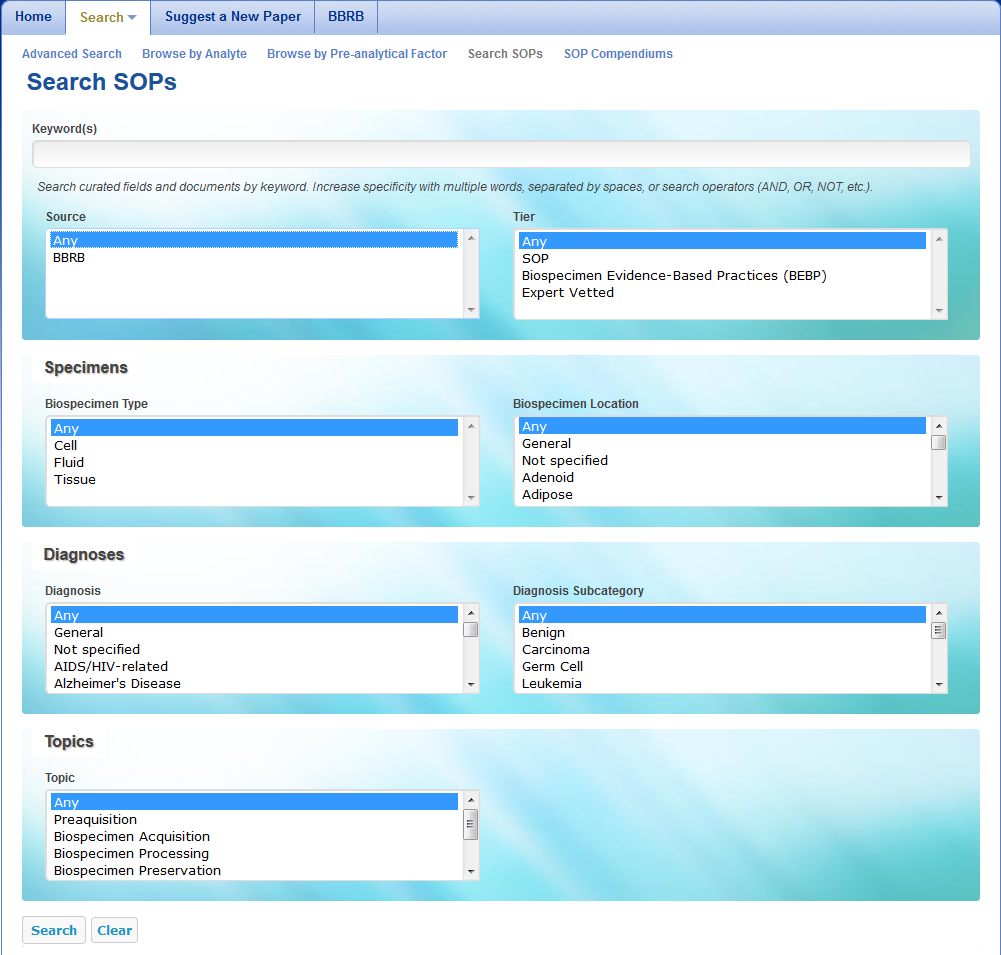
When you select fields from different lists, you narrow your search. For example, if you select the Cell biospecimen type and the Kidney biospecimen location, your search results include SOPs that concern both cells and kidneys.
The following table describes the SOP search criteria.
Note that the selections you make in the lists on the left determine the selections in the lists on the right. For example, selecting the Biospecimen Type “Fluid” makes “Blood” an available Biospecimen Location. |
SOP Search Criteria | Description
| |
|---|---|---|
| Source | Select the organization or institution that developed the SOP. | |
| Tier | SOPs are organized in a hierarchy system. The base tier is SOP. Progression to a higher tier will represent the work invested and the confidence level BBRB has in the document.
| |
Specimens | ||
Biospecimen Type | Select the type of biospecimen (Cell/Fluid/Tissue). | |
Biospecimen Location | Select the anatomical location from which the biospecimen was obtained. | |
| Diagnoses | ||
Diagnosis | Select the term that identifies the nature of a disease or condition associated with the biospecimen. | |
Diagnosis Subcategory | Select the diagnosis subdivision that differentiates the disease within the larger category.
| |
| Topics | ||
Topic | Select the topic or scope of the SOP document. |
If you want to search for items not present in the lists such as specific genes or biomarkers, enter those items in the Keyword(s) box. A keyword search searches all curated fields as well as the SOP document.To increase specificity, you can combine the keyword search with other fields on the Search SOPs page. You can enter multiple words into the Keyword(s) box with or without a search operator. See Conduct a Simple Search for a list of supported search operators. See the table below for field-specific search operators.
All fields and search operators are case-sensitive. |
| Field-Specific Search Operator | Example | Results |
|---|---|---|
| Prefacing a search phrase with Title limits the query for the search phrase to the SOP title. | title: GTEx | All SOPs containing the word GTEx in their title fields. |
| Prefacing a search phrase with Description limits the query for the search phrase to the SOP description. | description: "surgical tissue" | All SOPs containing the exact phrase "surgical tissue" in their description fields. |
| Prefacing a search phrase with BRD-ID limits the query for the search phrase to the BRD ID. | brdId: 8 | The single SOP with a BRD ID of 8. |
| Prefacing a search phrase with Body limits the query for the search phrase to the SOP document. | body: procurement procedure | All SOPs containing the words procurement and procedure in the body of the document. |
Gene symbol use is not standardized, so search by the full gene name. |
Click Search.
The Search SOPs Results page appears, summarizing your search criteria and the SOPs matching them. Click any SOP title to view the SOP.
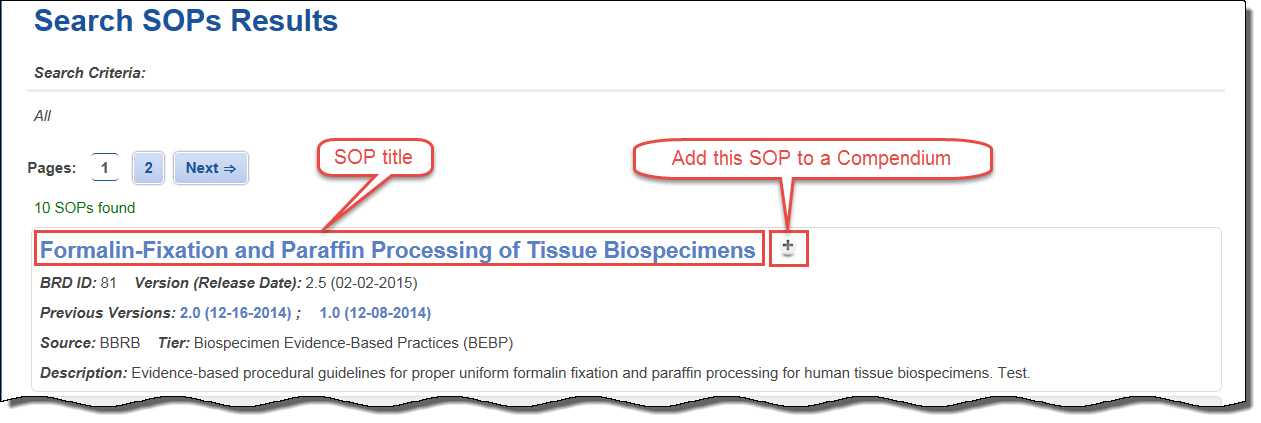
Clicking an SOP on the Search SOPs Results page opens the SOP page, where you can view a detailed description of the SOP and download associated SOP files.
When multiple SOP versions exist for a single SOP, you can download them as a ZIP file.
To view an SOP
Click an SOP title link.
The SOP page appears.
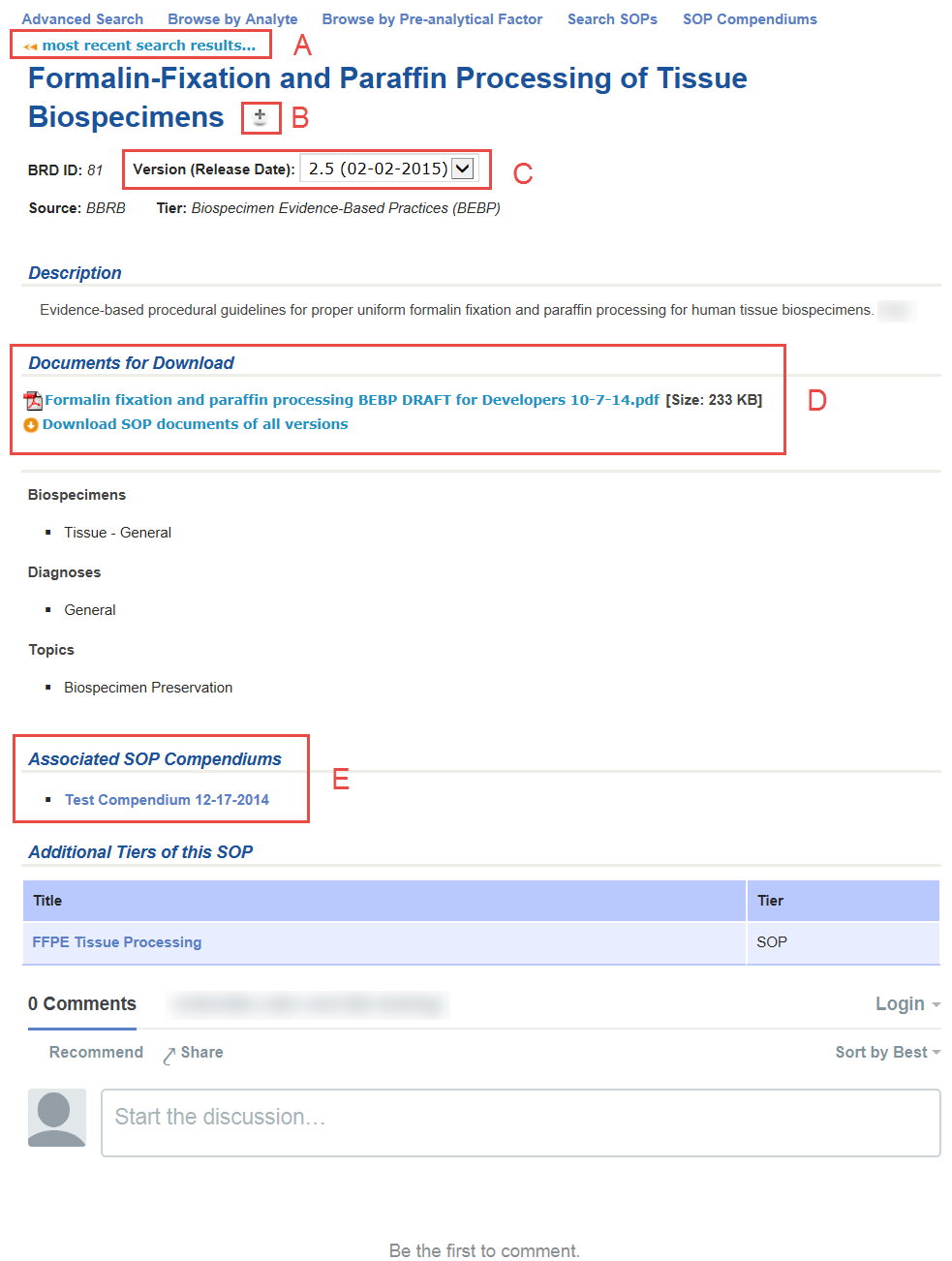
Return to the search results by clicking most recent search results... (A) at the top-left of the page. |

Add a comment to an SOP version to share your thoughts with others. Before you can comment, you must either register with Disqus or log in with your Facebook, Twitter, or Google account. All comments are subject to moderation by the BRD Curation Team.
To add a comment to an SOP



To share the comment, click Share and then click either the Twitter or the Facebook icon.

To make the SOP a favorite, click the star next to Favorite.

For more information about using Disqus, see the Disqus Knowledge Base.
Any time the BRD curation team updates an SOP or a compendium, a new version of that SOP or compendium is created with a unique BRD-ID. The most recent versions of the SOP or compendium are displayed by default. Differences may exist between versions that have clinical and scientific implications.
Before you download an SOP or a compendium, confirm that you have selected the correct version, if applicable. Versions are associated with a release date.
The following is an SOP version list:

The following is a compendium version list:

When multiple versions of an SOP exist, you can download all of them at once as a ZIP file. You can also download all SOP documents associated with a compendium at once as a ZIP file.
To download SOP documents of all versions

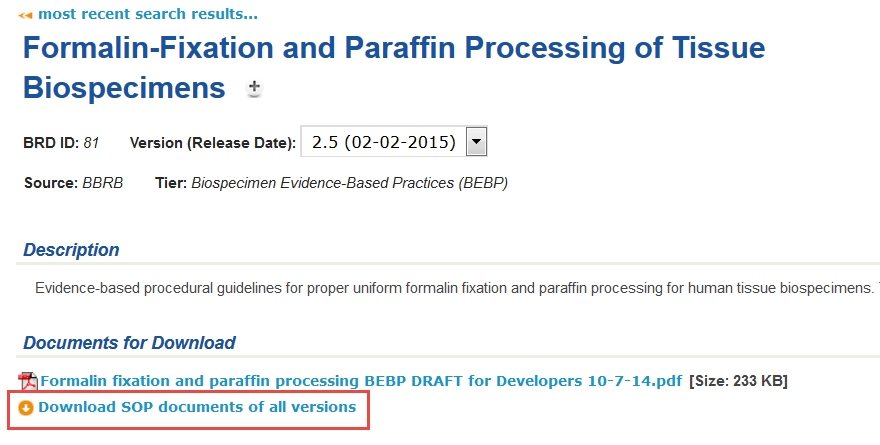
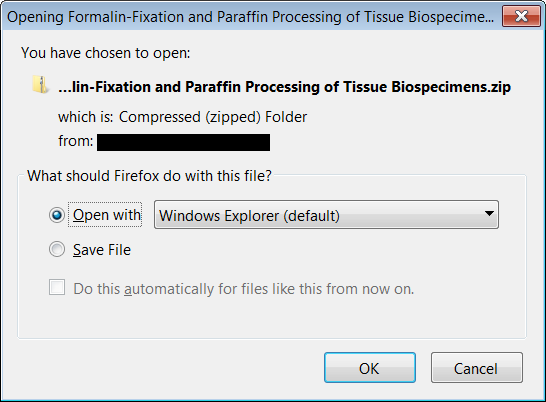

You can work with SOPs individually or with a compendium. A compendium is a family of SOPs that a curator has created. Compendiums can be project-specific.
You can also create a session compendium that lasts only for a work session. You can add any version of one or more SOPs to this compendium and then download them all at once as a ZIP file.
|
DRAFT
To add an SOP to a session compendium

Click the + button next to the SOP title.
You can also add an SOP to a compendium from the SOP page. Click the SOP title in the search results to open the SOP page. Click the + button next to the SOP title. |
The SOP is added to the session compendium.
To view all SOPs in the session compendium, click the folder icon next to the Help link at the top left of the page.![]()
-How to add a SOP to the session compendium: there is a [+] next to the SOP title on the Search Results page and also the SOP page. If a user clicks the [+] then the SOP is added to the Session Compendium. The [+] changes to a [-], indicating that the user can then click on the [-] to remove the SOP from the Session Compendium.
-the additions are version-specific, meaning that a user can add a specific SOP version, and can add more than one version to the Session Compendium
DRAFT
Any user can create their own compendium that lasts only for the duration of a work session.
To view all session compendiums
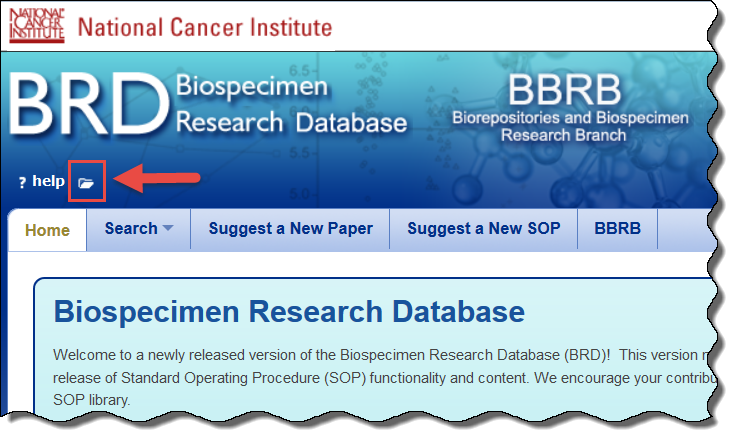

-To view the contents of the session compendium: Click on the folder icon to view the contents of the Session Compendium. The contents are displayed in a table. Users can also remove SOPs from the Session Compendium using the Action column in the table. Users can download all SOP documents by clicking on the [Download all SOP documents] link. Users can remove all contents in the Session Compendium by clicking the [Clear] link.
DRAFT
You can view all public compendiums and sort the list by title and release date.
To view a list of compendiums

You can view the details of a compendium including its available versions and a list of all SOPs associated with it.
To view compendium details
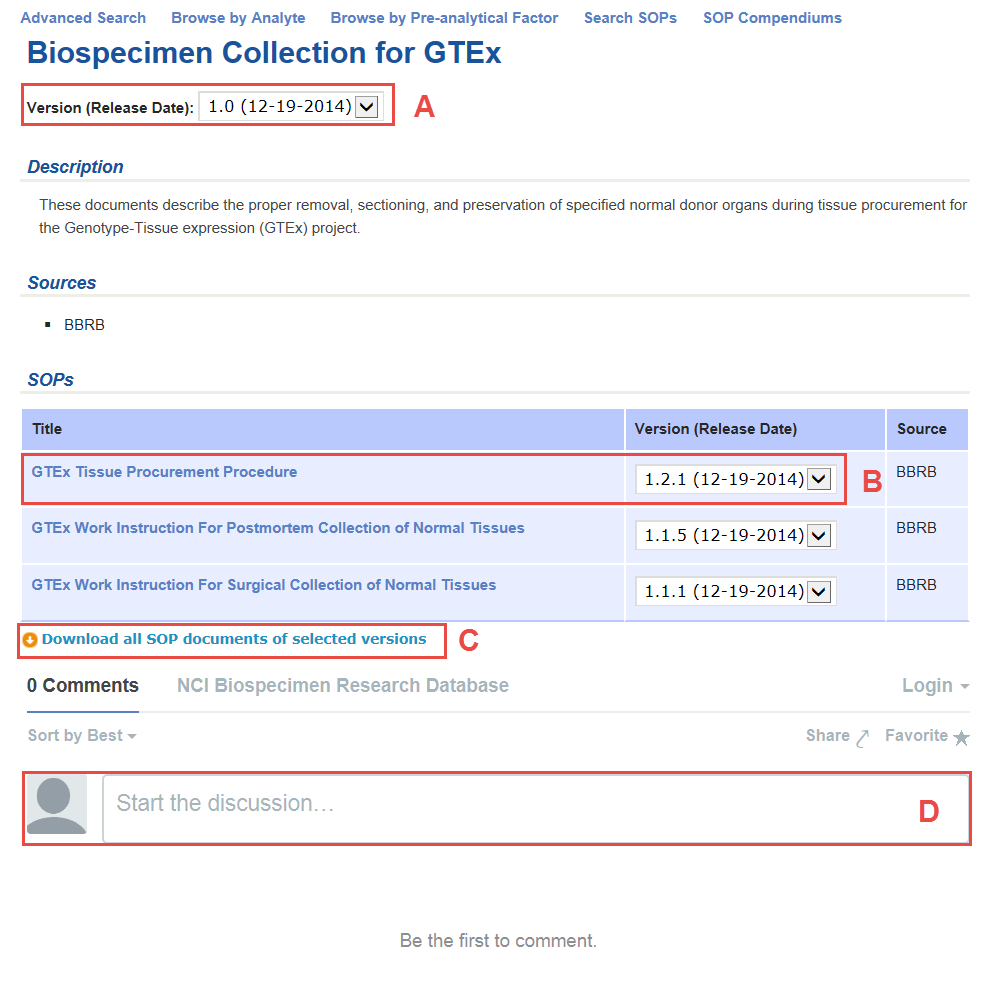
Add a comment to a compendium version to share your thoughts with others. Before you can comment, you must either register with Disqus or log in with your Facebook, Twitter, or Google account. All comments are subject to moderation by the BRD Curation Team.
To add a comment to a compendium



To share the comment, click Share and then click either the Twitter or the Facebook icon.

To make the compendium a favorite, click the star next to Favorite.

For more information about using Disqus, see the Disqus Knowledge Base.
If you know of an SOP that would be a useful addition to the Biospecimen Research Database, you can suggest it. SOP suggestions are screened against BRD contents to prevent duplication. Curators will review each suggestion and add BRD-appropriate SOPs to the database.
If you include your email address, you will receive an update once a curator considers your suggestion.
To suggest a new SOP
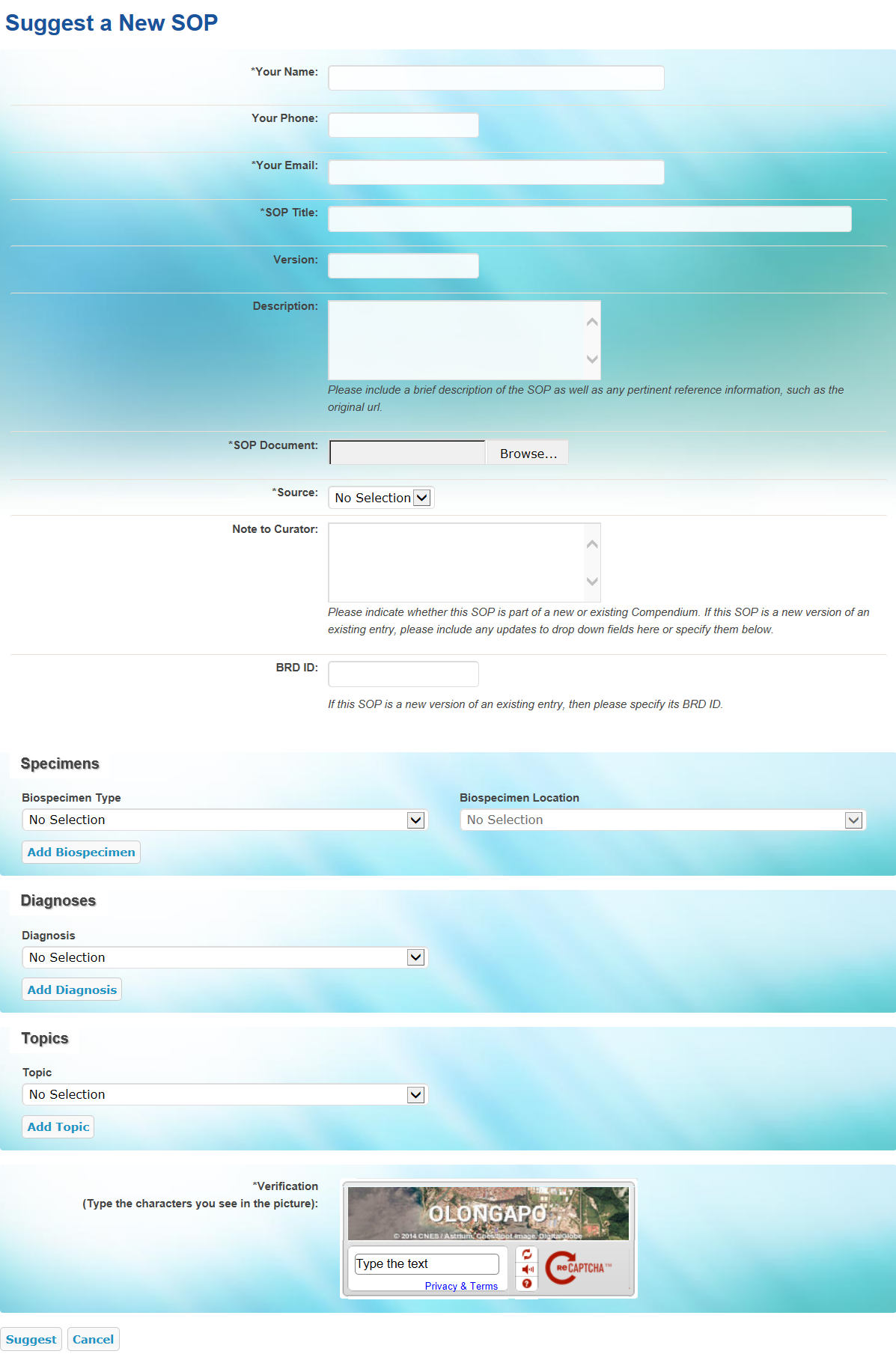
Select the anatomical location from which the biospecimen was obtained.
Click Add Biospecimen.
You can add multiple biospecimen types and locations to the SOP suggestion. |
From the Diagnosis list, select the term that identifies the nature of a disease or condition associated with the biospecimen, then click Add Diagnosis. You can add multiple diagnoses to the SOP suggestion.
{scrollbar:icons=false} |